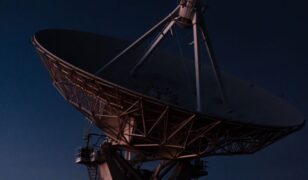Northrop Grumman sets new standard for synthetic aperture sonar
 In a U.S. Navy field test, Northrop Grumman Corporation’s AQS-24B mine hunting system successfully demonstrated the ability to perform synthetic aperture sonar processing at 18 knots in real time, the Falls Church, VA-based company announced September 14.
In a U.S. Navy field test, Northrop Grumman Corporation’s AQS-24B mine hunting system successfully demonstrated the ability to perform synthetic aperture sonar processing at 18 knots in real time, the Falls Church, VA-based company announced September 14.
The AQS-24B was developed at Northrop Grumman’s Undersea Systems campus in Annapolis. The field testing took place at the U.S. Navy Central Command in Bahrain, May 19-28. The AQS-24B finished 12 for 12 in successfully executing missions during the test exercise. During separate Tactics Development trials in Panama City, Florida, the AQS-24B achieved a record long single sortie tow duration of 16.25 hours from a surface ship.
Northrop Grumman has three decades of in-fleet airborne mine countermeasure experience with 27 systems fielded. The company was the first to field electro-optic mine identification, and developed the first long-range synthetic aperture sonar for mine warfare, the first mine warfare unmanned surface vessel (jointly with the Naval Undersea Warfare Center) and the first mine warfare unmanned underwater vehicle. The AQS-24B has significantly improved image resolution, as well as the speed of real-time sonar processing.
“The AQS-24B represents a significant advancement of the U.S. Navy’s mine hunting capability, on both the MH-53E helicopters as well as the Mine Hunting Unmanned Surface Vessels (MHUs),” said Alan Lytle, vice president, Undersea Systems business unit, Northrop Grumman. “With the AQS-24B, Northrop Grumman and the Navy have worked together to effectively advance the state of the art in undersea synthetic aperture sonar.”
The U.S. Navy can detect, classify and localize modern-day mine threats through the AQS-24B’s enhanced mine hunting sonar.
Source: Northrop Grumman Corp







